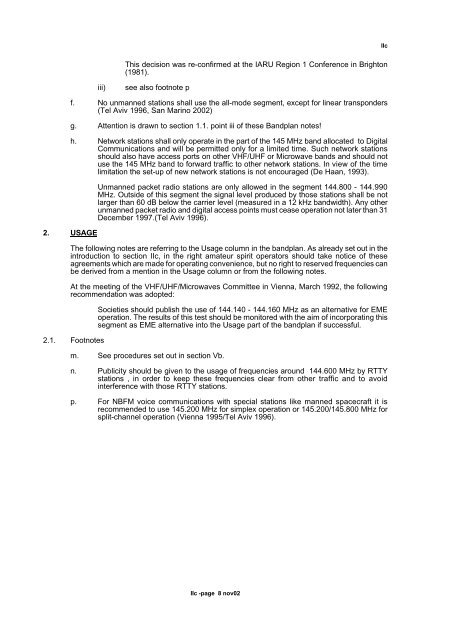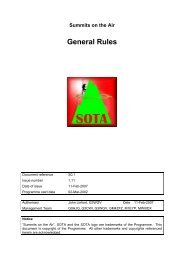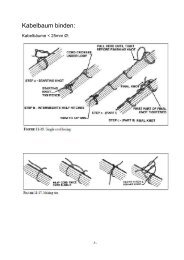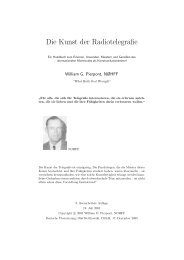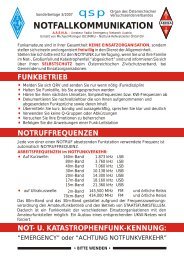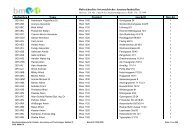IARU REGION 1 VHF/UHF/Microwaves BANDPLANS
IARU REGION 1 VHF/UHF/Microwaves BANDPLANS
IARU REGION 1 VHF/UHF/Microwaves BANDPLANS
- No tags were found...
You also want an ePaper? Increase the reach of your titles
YUMPU automatically turns print PDFs into web optimized ePapers that Google loves.
IIc<br />
This decision was re-confirmed at the <strong>IARU</strong> Region 1 Conference in Brighton<br />
(1981).<br />
iii)<br />
see also footnote p<br />
2. USAGE<br />
f. No unmanned stations shall use the all-mode segment, except for linear transponders<br />
(Tel Aviv 1996, San Marino 2002)<br />
g. Attention is drawn to section 1.1. point iii of these Bandplan notes!<br />
h. Network stations shall only operate in the part of the 145 MHz band allocated to Digital<br />
Communications and will be permitted only for a limited time. Such network stations<br />
should also have access ports on other <strong>VHF</strong>/<strong>UHF</strong> or Microwave bands and should not<br />
use the 145 MHz band to forward traffic to other network stations. In view of the time<br />
limitation the set-up of new network stations is not encouraged (De Haan, 1993).<br />
Unmanned packet radio stations are only allowed in the segment 144.800 - 144.990<br />
MHz. Outside of this segment the signal level produced by those stations shall be not<br />
larger than 60 dB below the carrier level (measured in a 12 kHz bandwidth). Any other<br />
unmanned packet radio and digital access points must cease operation not later than 31<br />
December 1997.(Tel Aviv 1996).<br />
The following notes are referring to the Usage column in the bandplan. As already set out in the<br />
introduction to section IIc, in the right amateur spirit operators should take notice of these<br />
agreements which are made for operating convenience, but no right to reserved frequencies can<br />
be derived from a mention in the Usage column or from the following notes.<br />
At the meeting of the <strong>VHF</strong>/<strong>UHF</strong>/<strong>Microwaves</strong> Committee in Vienna, March 1992, the following<br />
recommendation was adopted:<br />
2.1. Footnotes<br />
Societies should publish the use of 144.140 - 144.160 MHz as an alternative for EME<br />
operation. The results of this test should be monitored with the aim of incorporating this<br />
segment as EME alternative into the Usage part of the bandplan if successful.<br />
m. See procedures set out in section Vb.<br />
n. Publicity should be given to the usage of frequencies around 144.600 MHz by RTTY<br />
stations , in order to keep these frequencies clear from other traffic and to avoid<br />
interference with those RTTY stations.<br />
p. For NBFM voice communications with special stations like manned spacecraft it is<br />
recommended to use 145.200 MHz for simplex operation or 145.200/145.800 MHz for<br />
split-channel operation (Vienna 1995/Tel Aviv 1996).<br />
IIc -page 8 nov02


